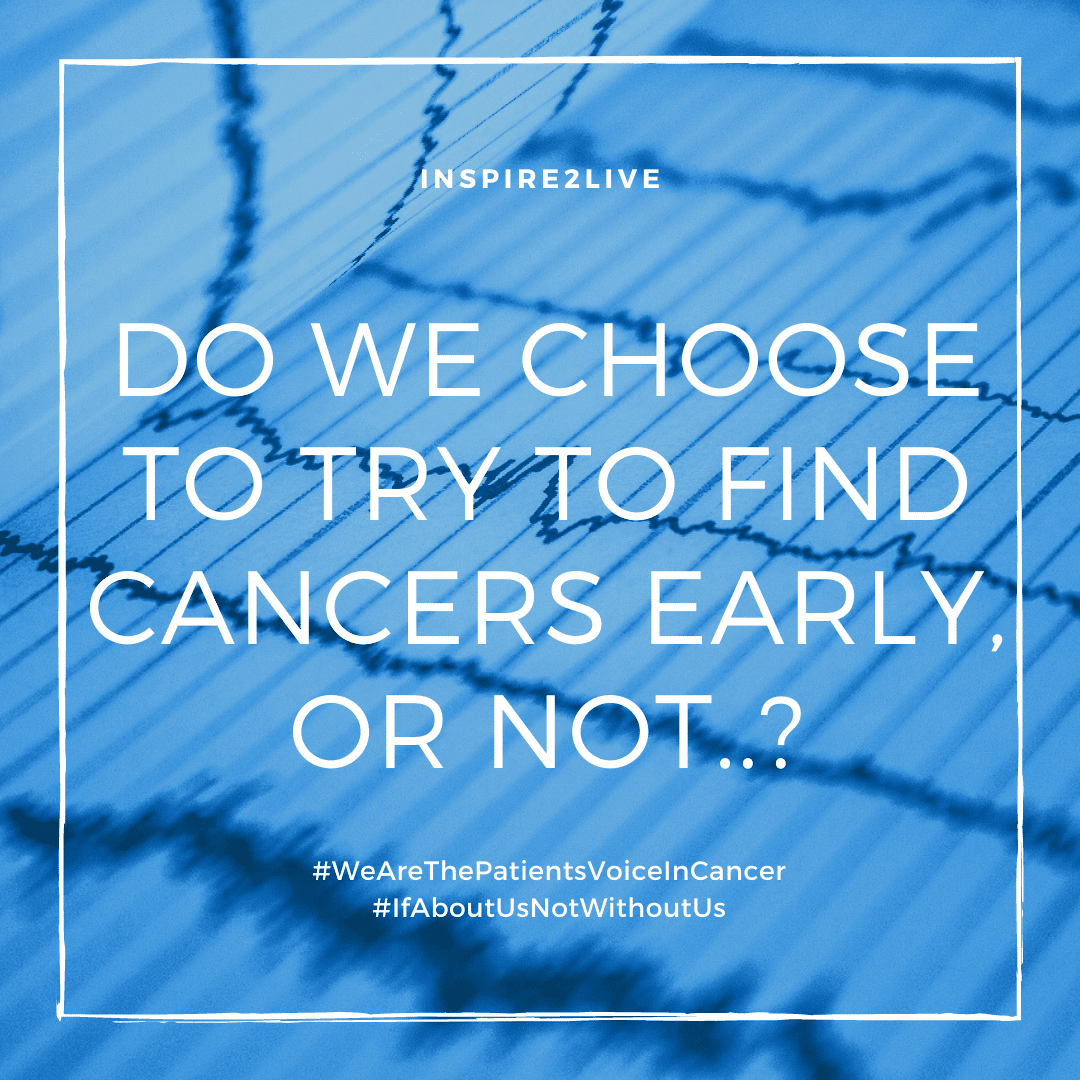WE HAVE A CHOICE TO MAKE AS A SOCIETY TO SCREEN FOR MORE CANCERS SO WE CAN TRY TO FIND THEM EARLIER OR CONTINUE TO FACE THE OVERWHELMING BURDEN OF LATE-STAGE CANCER AND DO NOTHING BUT WAIT…
The advancement of liquid biopsy assays (LBx) provides an opportunity to screen for the presence of cancer in the population, irrespective of where the cancer originates, before it becomes symptomatic. The reason why this is so important is because once people present with symptoms to their physician, the likelihood that the cancer has spread is far greater. Later-stage cancer is linked to poorer outcomes compared to cancers that are found earlier.
These developments in LBx are neither unexpected nor surprising. Researchers have been working on this technology for a long time and the momentum was such, that on World Cancer Day 2020, the Union for International Cancer Control, the Mayo Clinic and the American Cancer Society (ACS) brought together experts in screening and multi-cancer early detection (MCED) at the historic Mayowood Mansion in Rochester, Minnesota to discuss these blood-based technologies and explore what it would take, to make the global application of this screening approach a reality.
The reason to implement MCED technologies is simple. The management of late-stage disease in cancer presents a huge burden to patients and societies, both in terms of outcomes and healthcare expenditure. Innovation in treatment for late-stage disease is complex, relatively slow, and requires substantial investment. As a consequence, late-stage disease management reflects enormous disparities between high income countries and low- and middle- income countries (LMICs). It is imperative to carefully consider how MCED can be implemented so that it can address the need for equitable access to better outcomes and invest in sustainable healthcare systems.
Different perspectives must inform an MCED approach to public health screening programs, including the pre-clinical, translational and clinical evidence perspective, the international perspective, the evaluation of safety and effectiveness, the health technology assessment, the patient engagement and advocacy perspective, and the industry perspective. The experts at the Mayo Clinic meeting knew this and as a follow-up to the meeting, they collaborated for the publication of a Special Issue in the Cancer Journal .
Giving careful consideration to all of these perspectives is necessary, simply because at present there are no established pathways in regulatory systems to introduce these MCED technologies into national screening programs. We know that pursuing single-organ screening programs is already a herculean task. As an example, the national lung screening trial in the United States required hundreds of millions of USD in investment, despite governmental commitment, and more than a decade to complete. The type of investment and time required to pursue such a feat for MCED cannot be made by just one stakeholder alone. It would be impossible. There must be commitments from the public and private sectors. In addition, institutional and NGO support to systematically learn about the benefits of MCED technologies and the infrastructure required to responsibly deploy them. We need to take a stand as a society. Do we want to emphasize health management by favoring prediction, prevention and early detection? Or do we keep focusing on intervening too late? In Dutch we call that mopping with an open faucet.
Generating the evidence to support MCED for responsible screening programs is a task incumbent on all of us, with all stakeholders making a contribution. Not doing so is a disservice to patients and society, because what is the alternative – do nothing and just wait?
Piarella Peralta
Patient Advocate Inspire2Live
[1] https://acsjournals.onlinelibrary.wiley.com/toc/10970142/2022/128/S4 In this Special Issue you will also find the references to the arguments presented here, as these arguments are also presented in the publication.

